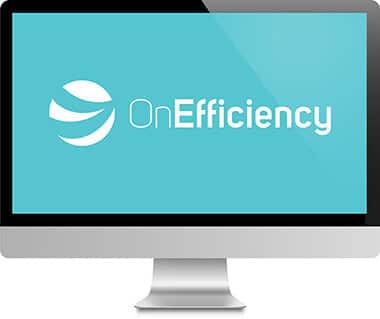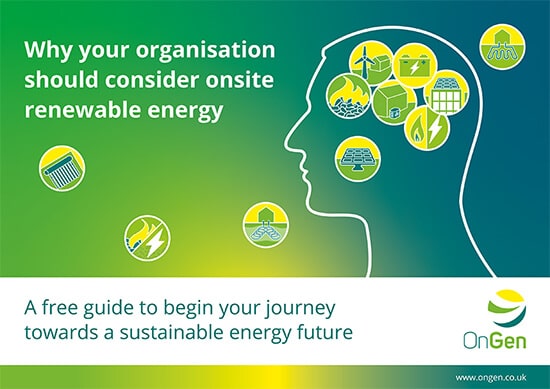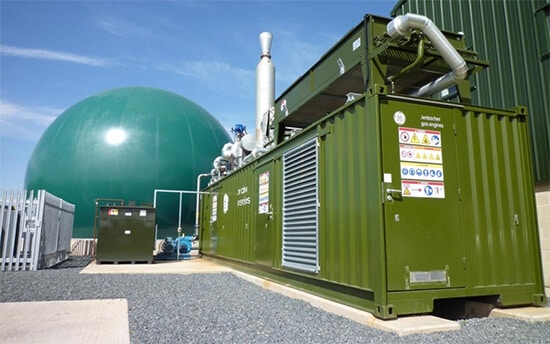Ground Source Heat Pumps

What are Ground Source Heat Pumps?
Ground Source Heat Pumps (GSHPs) extract latent solar energy from the ground, which provides a predictable source of low temperature heat throughout the year. The two most common designs for heat absorption in a GSHP system are a horizontal closed loop and vertical closed loop.
GSHP should not be confused with a geothermal heat pump. A geothermal heat pump operates in regions where the earth’s crust is thinnest and the heat is absorbed from the earth’s core, this technology is typically applied at the larger end of heat generation power plants. Whereas a GSHP absorbs heat from the ground which is energised by solar radiation, it is much more dependent on main air temperature and periods of direct solar heat gain, and it is more readily applied at micro and medium level.
Whilst a GSHP, water source heat pump and air source heat pump are dependent on air temperatures, GSHPs and water source heat pumps have higher and more constant seasonal performance factors because the ground and/or water acts as a thermal battery for the heat energy that they absorb.
GSHP should not be confused with a geothermal heat pump. A geothermal heat pump operates in regions where the earth’s crust is thinnest and the heat is absorbed from the earth’s core, this technology is typically applied at the larger end of heat generation power plants. Whereas a GSHP absorbs heat from the ground which is energised by solar radiation, it is much more dependent on main air temperature and periods of direct solar heat gain, and it is more readily applied at micro and medium level.
Whilst a GSHP, water source heat pump and air source heat pump are dependent on air temperatures, GSHPs and water source heat pumps have higher and more constant seasonal performance factors because the ground and/or water acts as a thermal battery for the heat energy that they absorb.
How does Ground Source Heat Pumps work?
GSHPs extract latent solar energy from the ground, In both systems the refrigerant is pumped through a network of plastic pipes (usually high-density polyethylene). Using the same mechanism as a refrigerator, the GSHP turns a large amount of low temperature liquid into a small amount of higher temperature liquid. In a horizontal closed loop system, these are laid in horizontal trenches beneath the ground at a depth of approximately 2m. Alternatively, if there is not enough ground area, vertical boreholes up to 200 metres deep are drilled in a vertical closed loop system. The diameter of a borehole will range from 10-15cm.
How are Ground Source Heat Pumps applied to a building?
Horizontal loops should be buried at least 1.5 m deep with a minimum coverage of 0.6m and the spacing between parallel runs should be at least the diameter of the coil; burying deeper is better and wider spacing improves long-term performance. Vertical loop systems require boreholes that are typically 60-120 meters deep and contain 1 or 2 loops. The boreholes should have a minimum separation of 5 to 6 meters, but this depends on the site geology.
In the UK, all boreholes are grouted, and the thermal quality of the grout significantly affects heat transfer. For non-domestic buildings in England, Part L2A of the Building Regulations states that the coefficient of performance, operating at design conditions, must not be less than 2.2 for space heating and 2.0 for domestic hot water.
The geological composition of the soil and the magnitude of the building’s heating demand are critical factors when considering a GSHP. The thermal mass is higher for denser soils, such as clay and lower for loam-type soil. The thermal capacity of the soil may be mixed a vary over its length and/or depth which will affect the amount of heat absorbed.
As the GSHP absorbs heat from the ground which is heated from solar radiation, the ground must have time to recharge in order for sufficient heat to be constantly available and to safeguard the seasonal performance factor. Therefore, consideration should be given to the potential long-term environmental effects of GSHPs. The running of GSHP systems extract or release heat into the ground, which results in local temperature anomalies in the subsurface. These temperature anomalies can change the chemical, physical, and microbiological characteristics of the ground.
As with all heat pumps, GSHPs are best suited to low temperature applications, such as underfloor heating or oversized radiators, as they deliver heat at lower temperatures over much longer periods. An insulation upgrade may be required to prevent the delivered heat from simply being lost through poorly insulated building fabric. Therefore, the building should be insulated as far as reasonably practicable to make the most of the GSHP, allow the ground to recharge and achieve a better seasonal performance factor.
In the UK, all boreholes are grouted, and the thermal quality of the grout significantly affects heat transfer. For non-domestic buildings in England, Part L2A of the Building Regulations states that the coefficient of performance, operating at design conditions, must not be less than 2.2 for space heating and 2.0 for domestic hot water.
The geological composition of the soil and the magnitude of the building’s heating demand are critical factors when considering a GSHP. The thermal mass is higher for denser soils, such as clay and lower for loam-type soil. The thermal capacity of the soil may be mixed a vary over its length and/or depth which will affect the amount of heat absorbed.
As the GSHP absorbs heat from the ground which is heated from solar radiation, the ground must have time to recharge in order for sufficient heat to be constantly available and to safeguard the seasonal performance factor. Therefore, consideration should be given to the potential long-term environmental effects of GSHPs. The running of GSHP systems extract or release heat into the ground, which results in local temperature anomalies in the subsurface. These temperature anomalies can change the chemical, physical, and microbiological characteristics of the ground.
As with all heat pumps, GSHPs are best suited to low temperature applications, such as underfloor heating or oversized radiators, as they deliver heat at lower temperatures over much longer periods. An insulation upgrade may be required to prevent the delivered heat from simply being lost through poorly insulated building fabric. Therefore, the building should be insulated as far as reasonably practicable to make the most of the GSHP, allow the ground to recharge and achieve a better seasonal performance factor.
The three-step process to net zero energy
OnGen offers a three-step process through OnGen Expert, OnEfficiency & OnSupply. Steps can be done holistically or separately.

Step 1:
Reduce energy consumption:
With OnEfficiency, we can help you identify where and what you can do to reduce energy consumption and improve energy efficiency.
By becoming more energy efficient, carbon emissions for your organisation will begin to reduce, along with the cost of energy.
By becoming more energy efficient, carbon emissions for your organisation will begin to reduce, along with the cost of energy.

Step 2:
Consider onsite renewable energy and battery storage:
With the OnGen Expert, we can help you explore the feasibility of generating and storing your own energy via a range of onsite renewable energy generation sources, like solar PV and heat pumps.
Switching to generating renewable energy onsite reduces the demand for grid-supplied energy, lowering the cost of energy bills, gaining resilience to grid fluctuations and reducing carbon emissions.
Switching to generating renewable energy onsite reduces the demand for grid-supplied energy, lowering the cost of energy bills, gaining resilience to grid fluctuations and reducing carbon emissions.

Step 3:
Switch to zero-carbon energy suppliers:
With OnSupply, we can help you find the cheapest green energy tariffs for any grid-supplied gas and electricity demand.
Eliminate the remaining energy-related carbon emissions for your organisation.
Eliminate the remaining energy-related carbon emissions for your organisation.
Your organisation will be assigned a dedicated account manager, who will offer training support and guidance. Additionally, if your organisation is struggling for time, the Managed Service, where assessments are conducted by the OnGen team on your behalf, can be a great option.

Talk to one of our team
Book a 20-minute conversation to discuss how we can help you by providing the right information, to make the right decisions.


Download our free Renewable Energy Guide
Case Study
“By assessing solar capability using the OnGen Expert software, we have been able to identify 4,000 tonnes of potential carbon savings in our city-centre building stock. OnGen has made it simple and easy for us to demonstrate potential energy costs savings of £2.9 million across the lifetime of potential onsite renewable installations. The OnGen Expert software has shown us the potential of onsite generation at a fraction of the cost of traditional assessments/consultants.”
NEYH
Book a conversation with OnGen today
Interested in finding out more information? Set up a meeting with a member of our team to discuss how we can help you.









